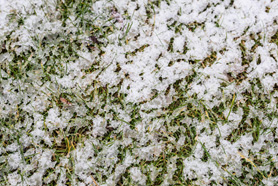
What Is Snow Mold And How Can I Get Rid of It In My Massachusetts Lawn?
While we’d all like to think that the frigid Massachusetts winters make unlivable conditions for turfgrass diseases, that’s not the case. Snow mold is a common turfgrass disease rampant in the winter and requires attentive New England lawn care to mend. Snow mold isn’t just unsightly; it can also damage grass blades and roots. In addition, snow mold can also trigger allergies in people and pets. Overall, dealing with snow mold on your grass is an unpleasant experience, so learn more about snow molds and what to do if they appear in your Massachusetts lawn.
What is snow mold?
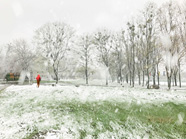
Snow mold isn’t one particular disease. In reality, snow mold is a group of fungal diseases that attack turfgrass in the winter. This attribute can make it more challenging to treat it properly since the snow molds behave differently. In addition, different molds have different environmental preferences. For example, some can become dormant in warmer months and reappear the following winter, while others quickly perish in the warm season.
The snow molds also affect turfgrass types differently. Some types of grass are more or less susceptible to snow mold. For example, Kentucky bluegrass and fine-leaved fescues are hardier against the disease, while bermudagrass and zoysia grass are more sensitive. Knowing your grass type helps protect your lawn appropriately when dealing with snow mold.
Types of snow mold
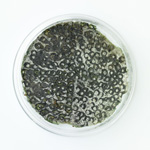
Snow mold comes in all shapes and sizes, so learning their differences is necessary to diagnose the problem. There are four common types of snow mold in Massachusetts that you should be aware of:
- Pink snow mold – This mold can occur year-round if the weather is cold and wet. It produces pink spore web rings in irregular patches of grass. While it usually doesn’t kill grass completely, it can be hard to manage.
- Grey snow mold – Like the name, this mold type produces noticeable grey, matted patches of fungal spores. It prefers heavy snowfall and thrives during snow melt when temperatures are just above freezing. However, it survives throughout the summer and will reappear the following winter if the conditions are optimal.
- Coprinus snow mold – Also known as cottony snow mold, this mold type covers grass blades with wool-like mycelium growth and appears during snowmelt. It isn’t as picky as grey snow mold and grows in a wide range of temperatures, from below freezing to warmer spring temperatures of 60 degrees.
- Snow scald – This mold type also appears at snow melt and prefers very wet conditions. It looks more distinct from the other diseases because it bleaches the grass blades until they die and produces sclerotia, compact structures containing food reserves that keep the fungi thriving and turn black as it matures.
What causes snow mold?
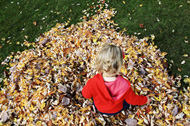
Several conditions encourage snow mold fungi to grow. First, heavy snowfall creates a breeding ground for mold, especially when it begins to melt. The lack of airflow under the snow and the moist conditions are perfect for mold growth. Thick thatch further encourages snow mold growth, making it harder for snow melt to dry out and providing additional nutrients through organic matter for mold to feed off. Fall leaf buildup also promotes snow mold growth for the same reasons. It keeps the grass moist and provides decaying material for mold to eat. Finally, excess nitrogen through organic matter or fertilizer facilitates snow mold growth by speeding up the growth process.
How to prevent snow mold on your grass

As the saying goes, “an ounce of prevention is worth a pound of cure.” Unfortunately, fungicides rarely help eliminate snow mold on grass, so prevention is the remedy to avoiding these winter diseases. The first thing to focus on is professional lawn care, as it’s the best way to prevent snow mold growth.
- Reduce the thatch layer. While a ½ inch thick thatch layer is healthy, too much thatch can choke your lawn. You can improve soil drainage during snowmelt by keeping up with dethatching every few years. Aeration every year or two can also decrease thatch density and improve water and nutrient cycling.
- Rake up leaves in the fall. In the fall, heavy leaf buildup in your lawn can compact grass. This accumulation keeps conditions moist and encourages mold growth. Instead of letting your fall leaves rot, rake them up in the late season so your grass can breathe.
- Mow the lawn before the first snowfall. While grass growth slows in the winter, mowing right before a snowstorm is still crucial. Heavy snowfall compresses the grass together and encourages mold growth, but mowing prevents suffocation and avoids grass compaction.
- Apply a preventative fungicide before the snowfall. Preventative fungicides are much more effective than using fungicides to fix the problem. A preventative application acts as a shield over your lawn by preventing any snow mold from penetrating the grass blades. Apply the barrier right before a snowstorm and after heavy rain throughout the winter to maintain the protective fungicide shield.
Best practices for snow mold removal
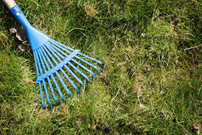
Snow molds typically go away independently if you continue proper spring lawn care. To remove snow mold, first, rake out the affected grass gently in the spring and let it dry. Then, you can continue regular spring fertilizing to promote grass growth that will push out mold growth.
Sometimes, bare spots must be reseeded if patches of grass are killed by more significant snow mold infections.
Generally, fungicides should be avoided because they’re not as practical. However, fungicides may be used as a last resort, especially in bad pink snow mold cases. While this is rarely an all-in-one solution since fungicides are rarely effective, it may help relieve the grass of severe mold growth. In addition, professional Massachusetts lawn care will need to be used to ensure the grass recovers efficiently.
Stop snow mold in its tracks with effective snow mold prevention
Maintaining a beautiful and snow mold-free lawn requires time, effort, and expertise. If you are looking for professional lawn care services to help you achieve the lush and vibrant lawn you desire, we are here to help. Our team of experienced professionals is dedicated to providing top-quality lawn care services tailored to your specific needs and preferences.
Barefoot Lawns serves Sterling and beyond by providing central Massachusetts residents with superior lawn care that they can rely on. Call us at 508-281-1441 or contact us here to say goodbye to snow mold in your lawn today.
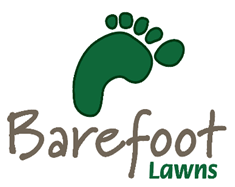
Recent Comments